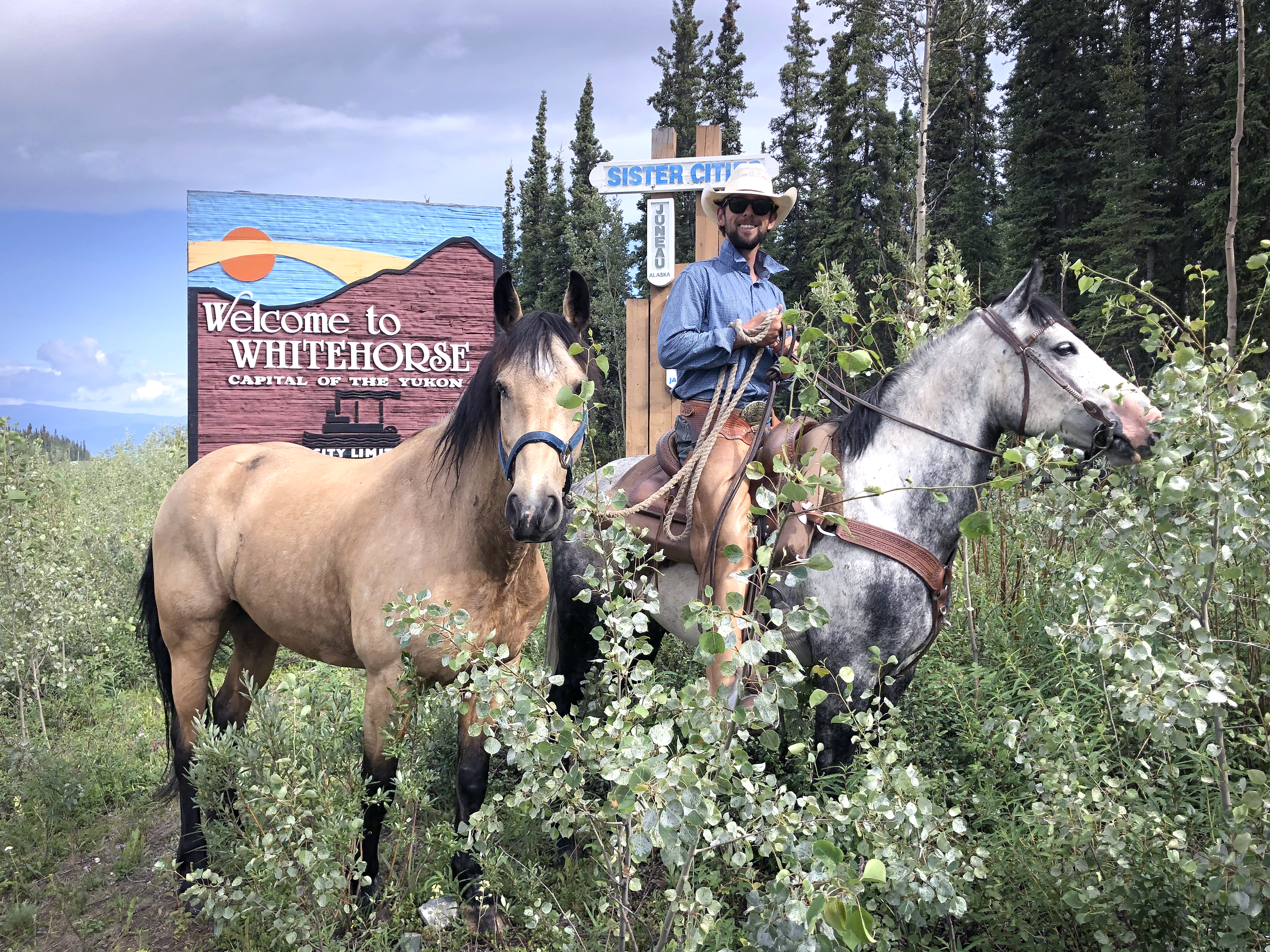In Whitehorse we were welcomed like family.
“Filipe, it’s an honor to be hosting you guys… I’m reading your book right now,” grinned Jocelyn Barrett before passing me a cold Yukon Gold beer.
A lawyer, originally from Kuujjuaq, Quebec, she and her husband, John Van der Meer, live in a gorgeous log home just north of Whitehorse with a chestnut mare and a bay gelding. John’s father, Sid Van der Meer, who we met in Beaver Creek, graciously secured this extraordinary layover for us.
“My dad hasn’t stopped talking about you guys since you came through,” said John Van der Meer while he flipped the elk sausages we would have for dinner that night.
With the horses in a spacious pasture filling their bellies and resting their hooves, With Clara Davel, my Argentinian girlfriend and support driver, I went about exploring the city of roughly 25,000 people – northern Canada’s major urban hub.
As fate would have it, we arrived in time for the final day of the Adaka Cultural Festival.
In its ninth year, the Festival, whose name means ‘coming into the light’ in the Southern Tutchone language, celebrates the arts and culture of the Yukon’s fourteen First Nations. Since the United Nations declared 2019 the year of indigenous languages this year’s event celebrated the eight First Nations’ language groups in the Yukon in all aspects of the festival.
“There’s a real sense of now or never when we discuss First Nations languages… they are endangered,” said Charlene Alexander the executive director of the Yukon First Nations Culture and Tourism Association.
In nearly all of the communities in the Yukon, only the elders can still speak their language fluently due to the effects of residential schools. It was heartbreaking to hear stories about how first nations children were shamed and mistreated for speaking their native tongues.
“I know the weight of the Bible. They (missionaries) used to make me hold bibles with my arms spread out and if I lowered my hands below my shoulders they would add another one on top,” said a first nation artist from Teslin while he worked on a stunning buffalo carving.
Yet, even with the hard stories I heard, there was a real sense of hope in people’s eyes and smiles. I learned about different initiatives being carried out in order to save these native languages, like the Tr’ondëk Hwëch’in government in Dawson City that is turning to social media for help. With weekly Facebook videos featuring Hän language words, they hope to reach the younger generation. Other native governments have study groups and native languages are being offered in elementary and high schools throughout the territory.
After a few days rest and restocking provisions for the next 1000 kilometer stretch of nothing we would cross before arriving in Fort Nelson, it was time to get back on the road again.
But not before giving a motivational talk to some bright-eyed 4H’ers on the south end of town. The parents who organized the event at their farm enjoyed the talk so much they loaded us up with hay before we left.
